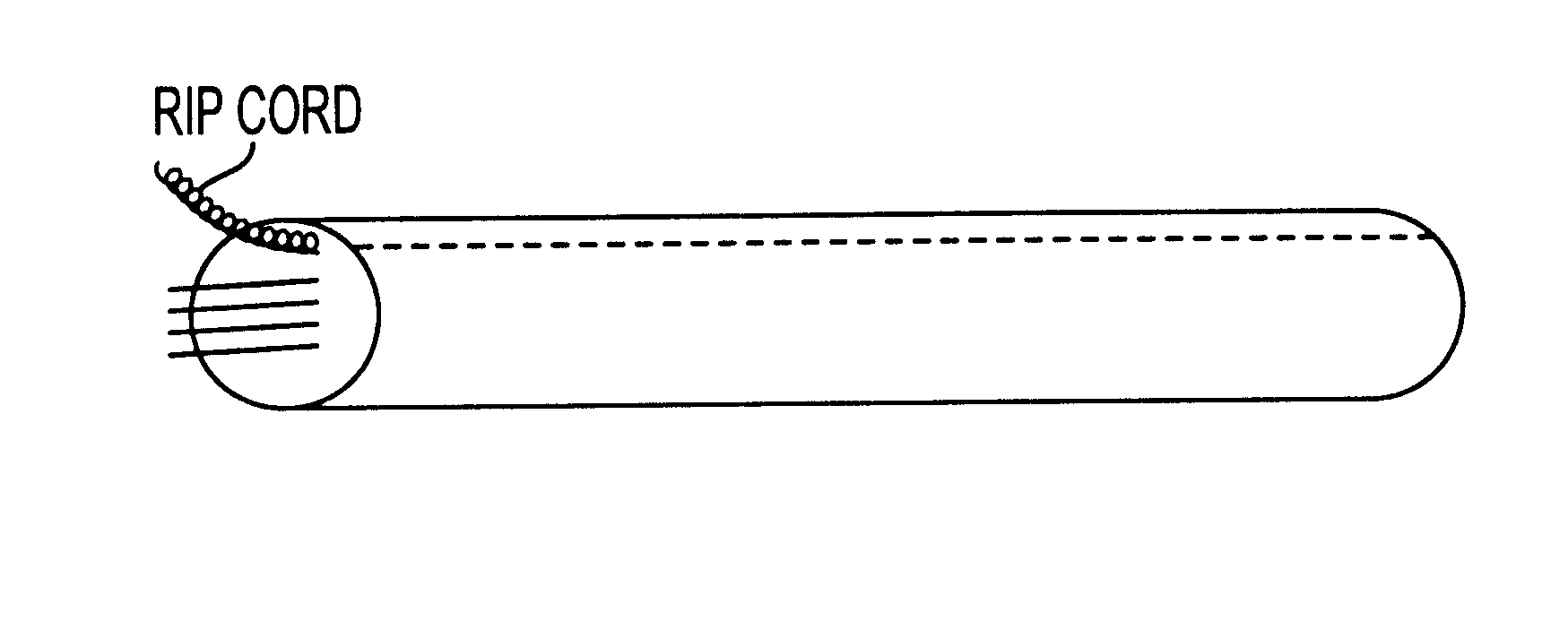Buffer tube that results in easy access to and low attenuation of fibers disposed within buffer tube
a buffer tube and fiber technology, applied in the field of buffer tubes, can solve the problems of optical fiber damage and signal attenuation, insufficiently addressed fiber damage or breakage risk, and increased degree of buckling
- Summary
- Abstract
- Description
- Claims
- Application Information
AI Technical Summary
Benefits of technology
Problems solved by technology
Method used
Image
Examples
Embodiment Construction
As previously discussed, existing optical fiber access methods use various slitting tools to open the buffer tubes to access several of the fibers in a multiple fiber bundle. Aside from requiring specialized tools, such methods of access potentially attenuate signals on the fibers or may cause damage or breakage. As a first feature of the invention, a ripcord fiber or strands of fibers are laid parallel to the optical fiber bundle. The ripcord may be disposed Hi interior to the buffer tube as shown in FIG. 4(a) or embedded in the tube wall as shown in FIG. 4(b). The ripcord(s) can be color coded or otherwise marked or banded to distinguish it from other components of the fiber bundle, such as the optical fibers. Once an initial access method is used to open the buffer tube, the ripcord fiber(s) can be used to open any desired length of the buffer tube with minimal deformation of the optical fiber bundle. This will occur if the following fracture mechanics criteria is met, that the e...
PUM
 Login to View More
Login to View More Abstract
Description
Claims
Application Information
 Login to View More
Login to View More - R&D
- Intellectual Property
- Life Sciences
- Materials
- Tech Scout
- Unparalleled Data Quality
- Higher Quality Content
- 60% Fewer Hallucinations
Browse by: Latest US Patents, China's latest patents, Technical Efficacy Thesaurus, Application Domain, Technology Topic, Popular Technical Reports.
© 2025 PatSnap. All rights reserved.Legal|Privacy policy|Modern Slavery Act Transparency Statement|Sitemap|About US| Contact US: help@patsnap.com

